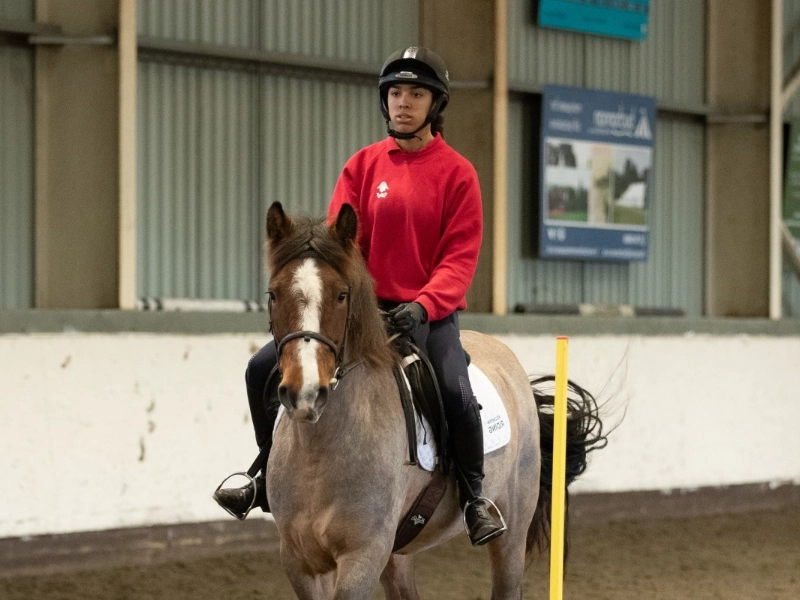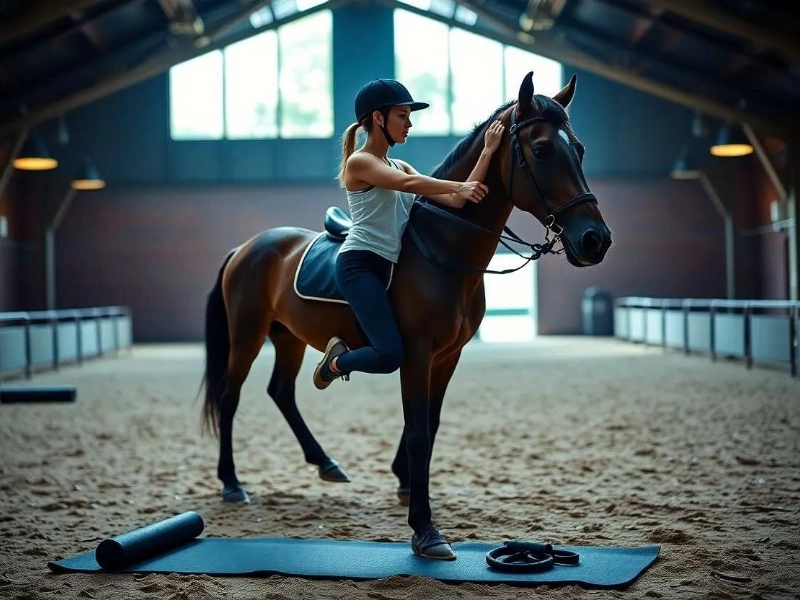Equestrian Fitness: Exercises for Riders
Riders who want to improve their performance and relationship with their horses must be in equestrian shape. Riding calls for a certain mix of endurance, balance, power, and flexibility. Riders that want best performance in the saddle have to conduct particular exercises aiming at these areas. This page lists efficient workouts meant for equestrians so they may increase their physical capacity required for a good riding experience.
Exercises for Core Strengthening
 Advertisement
Advertisement
Any rider needs a strong core since it gives balance and stability when seated. Effective communication with the horse depends on core muscles, which also help with correct posture. The plank is one great workout for increasing core strength. Laying face down on the floor, raise your body off the ground and balance on your forearms and toes in a plank. Engaging your core muscles, keep your body straight from head to heels. Holding this posture for thirty seconds to a minute, progressively lengthens the time as you develop strength. The Russian twist is another excellent fundamental practice. Sit on the floor feet flat and with bent knees. Keeping your back straight, gently slant back. In front of you hold a weight or medicine ball; twist your torso to the right then to the left. Maintaining balance on a ride depends on rotational strength, which this exercise increases. Your riding stability and control will be much enhanced by include these fundamental workouts into your program.
Leg Strengthening exercises

Riders must have strong legs since they enable correct leg position and control while riding. Strong legs help one to communicate with the horse using minute signals. One great way to develop leg strength is with squats. Keeping your knees behind your toes, stand with your feet shoulder-width apart and drop your body as though seated back into a chair. With an eye towards preserving proper form, aim for three sets of ten to fifteen repetitions. Still another great leg exercise are lunges. Step forward with one leg, then lower your body such that both knees bend at a 90-degree angle. Reverse to the beginning and alternate legs. Lunges strengthen the legs but also help with coordination and balance—qualities necessary for riding. Including these leg exercises into your training will improve your general endurance and riding performance.
Stretching Programs and Flexibility

For riders, flexibility is absolutely vital since it lets them move and position themselves better on the saddle. Frequent stretching increases general performance and helps avoid injuries. One excellent stretch you should include is the hip flexor stretch. Beginning in a lunge stance, one foot forward and the other leg extended back. To feel the hip flexor of the extended leg stretching, gently push your hips forward. Hold on each side 20 to 30 seconds. A further useful stretch is the seated forward bend. Sitting on the floor, extend your legs ahead of you. Staying back straight, reach forward towards your toes. This stretch works the lower back and hamstrings, therefore enhancing flexibility needed for riding. Including a focused stretching program in your weekly exercise sessions will improve your flexibility and support correct riding posture.
Exercises on Balance and Stability

Equestrian health depends critically on balance since it helps riders to keep control over many motions. The single-leg stand is one great balancing drill. Keeping the opposite leg somewhat bowed at the knee, stand on one leg. Stay in this posture as long as you can, then flip legs. Try closing your eyes or standing on a precarious surface, such a balancing pad, to raise challenge. The stability ball roll-out is yet another great balancing exercise. With a stability ball in front of you, kneel on the floor. Keeping your body in a straight line, lay your forearms on the ball and move it forward. Roll the ball out and back while working from your core. Effective riding depends on your core strength and stability, hence this practice helps both of those. Including balancing activities in your exercise program will improve your general riding confidence and ability.
Rider endurance training
Riders especially on lengthy rides or competitions depend on endurance. Increasing your cardiovascular fitness can let you ride with much more stamina. Interval training is one great approach to improve endurance. This entails periods of rest sandwiched between high-intensity spurts of exercise. You might, for instance, sprint for thirty seconds then walk for a minute. Spend twenty to thirty minutes repeating this cycle. Cycling is also another great endurance-building workout. This low-impact exercise increases cardiovascular fitness and strengthens your legs whether riding a stationary bike or outside. To increase your stamina, aim for several times a week at least thirty minutes of riding. Including endurance training into your regimen will improve your riding and let you enjoy longer, more fun rides.
Focus Techniques and Mental Fitness
Equestrian fitness is both mental as well as physical strength. Particularly under demanding circumstances, riders have to keep concentration and calm. Visualisation is one great way to raise mental fitness. Spend some time each day seeing yourself riding boldly and deftly negotiating several obstacles. This exercise boosts confidence and mentally gets you ready for actual riding circumstances. Furthermore improving mental attention are mindfulness and breathing techniques. Before riding, practise deep breathing exercises to help you relax and lower anxiety. Deeply inhale with your nose; hold for a few seconds then gently exhale through your mouth. This easy workout helps you remain centred on your rides and encourages rest. Including mental fitness methods into your program will improve your whole riding performance and experience. Equestrian fitness is, all things considered, a range of activities used to increase strength, balance, flexibility, endurance, and mental focus. Your riding will improve and you will develop a closer relationship with your horse by including core strengthening, leg exercises, flexibility routines, balancing activities, endurance training, and mental fitness strategies into your schedule. Accept these challenges to bike with more confidence and efficiency.







